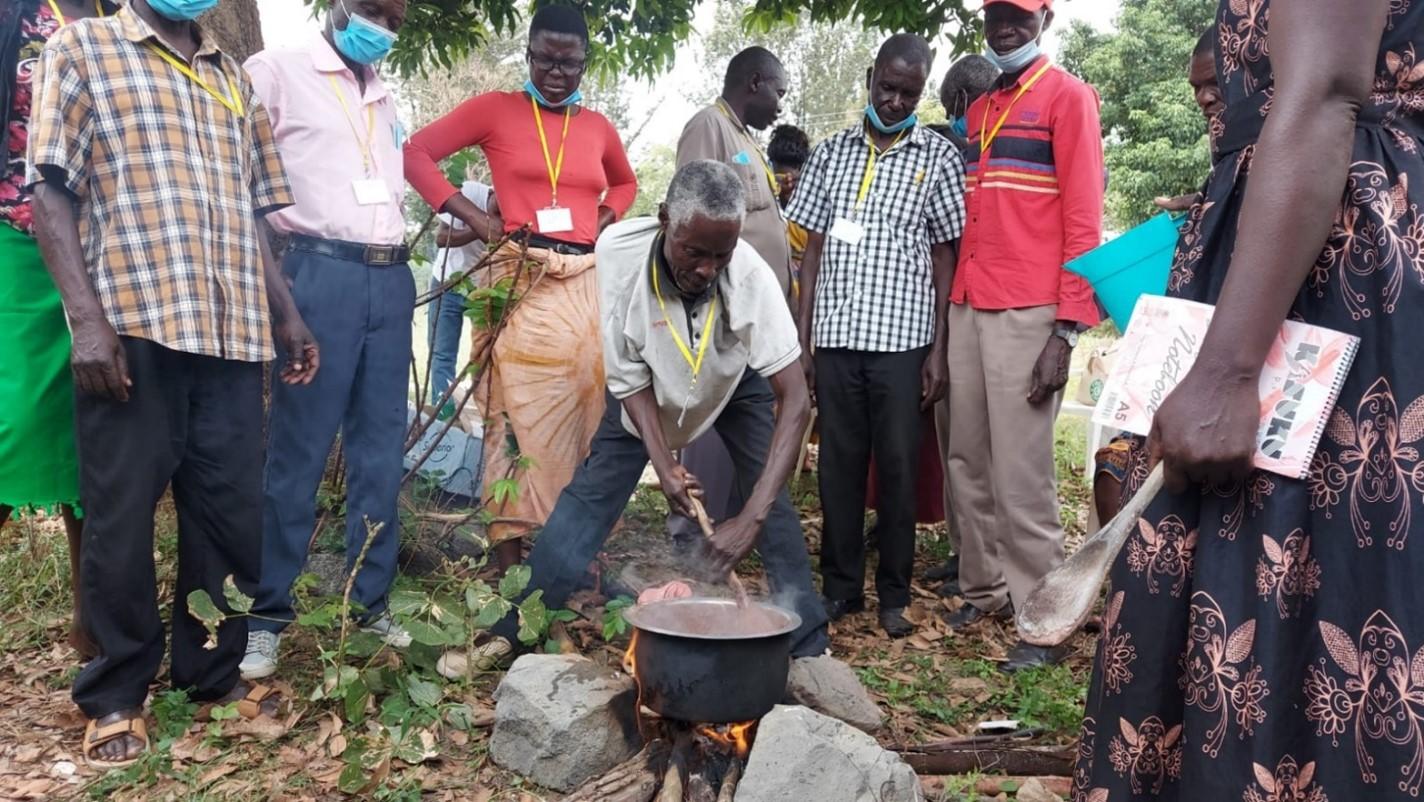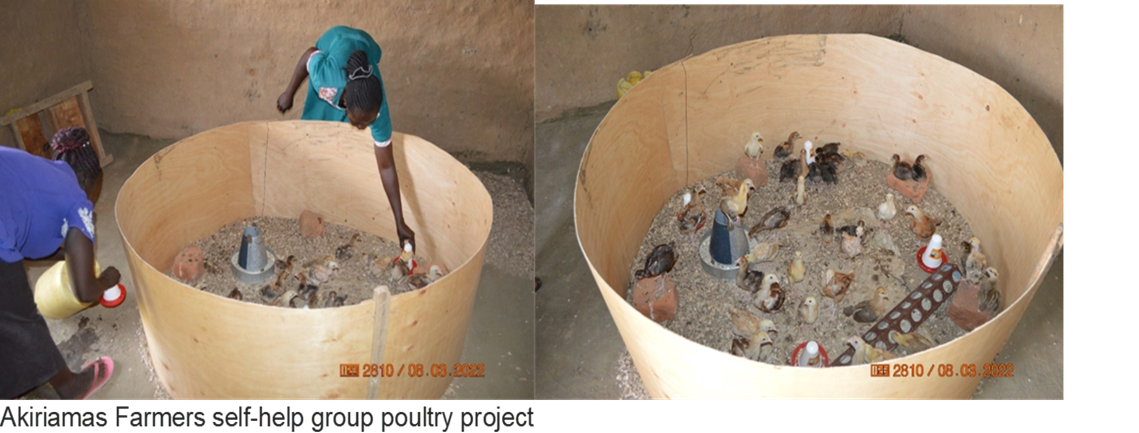Blog Empowering Rural Communities in Teso North and South, Busia County to own their successes

In 2021, the Alliance of Bioversity International and CIAT in collaboration with Save the Children and Busia County government, launched the project on ‘Improving dietary quality and livelihoods using farm and wild biodiversity through an integrated community-based approach.’
This project aims at actively involving the community and local authorities to improve the former’s nutrition outcomes and incomes through participatory research, a tool that enables positive change among the study participants. When study communities actively take part in charting the way forward to improve their livelihoods using locally available resources, long-lasting impact is expected.
Data from the last Kenya Demographic and Household Survey- KDHS 2014 indicates that stunting (low height for age) rates in Busia County are at 22.2%. Although lower than the national level (26.2%), this is still far from a calculated World Health Assembly (WHA) target of 12.6 per cent by 2025. Stunting or growth retardation which develops during the first 1000 days (from conception until the child’s second birthday) is irreversible and has lifelong consequences, including smaller adult stature, lowered immunity that predisposes the child to risk of infections, likelihood of premature death, impaired brain development, and lost productivity. Besides health status and care, an inadequate diet is one of the immediate causes of child malnutrition and only 58.9 % of women of reproductive age and 41.3% of children aged 6 to 23 months met minimum dietary diversity, a proxy indicator for diet adequacy, as measured during a 2018 survey in Teso South (EaTSANE project, Giessen University, Germany).
To mitigate the adverse and chronic effects of malnutrition, Busia County has developed a nutrition action plan that contains 10 key result areas. Our project aims to contribute to result areas 7 on scaled up or strengthened nutrition in Agriculture, and 8 on strengthened nutrition information systems, research learning and innovation. Our integrated community-based approach brings together different actors that include community members, researchers, local NGOs, and local authorities, to co-design and implement interventions that have long-term impact on the community- by improving diets, incomes, and general livelihood.
In August/September 2021, we conducted a baseline assessment of the prevailing agriculture and nutrition situation in twenty randomly selected community health units from both Teso North and South sub counties in Busia County. Results from the baseline assessment revealed relatively low dietary diversity in women of reproductive age and their children aged below two years. 29% of women and 58% of children attained minimum acceptable dietary diversity. The women diversity score reduces further to 14% when we consider the recommended minimum consumption of 15 grams of the food items.
The baseline results informed the intervention design phase of the study. The Alliance in partnership with Save the Children and the county government organized a series of six workshops in ten of the community health units- randomly selected from the twenty assessed at baseline. Each community health unit organized itself in a group of about thirty-six members, inclusive of women with children under five years, elderly men and women, the youth, church leaders and other opinion leaders. The final aim of the workshops was for each group from the selected community health units- with guidance from Alliance researchers, county nutrition and agriculture officers and Save the children, to develop community action plans to address the gaps as found in the baseline survey.
In their action plans, each of the ten groups agreed on a combination of intervention activities which they would implement. These include poultry keeping, dark green leafy vegetable, fruits, and groundnuts farming. Participants in all the groups unanimously opted to include table banking as a fundraising strategy to fund both the intervention and other self-development activities.
The participants further chose to register themselves as self-help groups with the national Ministry of Social Services to facilitate implementation of activities as a group. Subsequently, group members received numerous trainings from officers from the county’s agriculture and nutrition departments, to equip them with knowledge and skills to implement the selected activities as per the community action plans. The county Ministry of Agriculture trained the groups on poultry keeping, land preparation, modern kitchen gardening techniques, and organic manure preparation. The members are implementing the activities in the group demo plots while replicating at their own homes.
To encourage all family members to participate in the acquisition and preparation of food, the sub county nutritionists and project partners organized a series of cooking workshops for the group members. The workshops were on improved cooking methods for nutrient retention and dietary diversity. All group members, including men actively participate in this exercise, to demystify the cultural belief that food preparation and child feeding is only reserved for women.
During the cooking workshops and by way of nutrition education, detrimental practices that undermine good nutrition were discussed and discouraged. In addition to the group learning sessions, trained community health volunteers are providing door-to-door nutrition education and counselling to all households within the intervention health units.

Community Health Volunteers (CHVs) participation during the cooking workshops.
Within three months of the intervention phase, the groups had taken on vegetable planting and poultry keeping in their farms. The groups have harvested vegetables from the group farms and sold these to reinvest the income in the group activities. The households on the other hand, claim to have better access to fresh vegetables and eggs and spend less money on food because of the household kitchen gardens and poultry keeping projects. Moreover, the groups have been trained on savings, loans, and investment, with the view of not only producing for household consumption but also for markets thereby improving both food availability in the local markets and household incomes. They also receive regular trainings on group dynamics and ways to co-exist, complimenting each other's strengths and weaknesses. Since the groups are officially registered as self-help groups, they are legible to receive funds and loan facilities from the government and other financial institutions.
So far, community groups are going a great length implementing their self-chosen activities. This can be attributed to the fact that they were involved from the onset and hence took ownership of the project. One project beneficiary testified: “The project is very helpful because so far at least people, especially women have seen the importance of planting vegetables to feed their families and earn their own money by selling to other villagers. Also, the table banking initiative is helping us to get small loans to improve our farming activities and meet our other family needs. The men here are also actively involved including our area assistant chief” Bernard Alemu, Kiriko Lishe Bora group.
Another beneficiary reiterates that the project has really benefitted her and other community members. All the thirty group members have their own kitchen gardens where they grow different traditional vegetables and kales. She is excited about the new sack farming technique which she learnt during the project training sessions, and she is implementing in her home.
“In our group, we agreed to implement four activities: poultry keeping, and farming of orange fleshed sweet potatoes, pawpaw fruit, and dark green leafy vegetables. so far, we have grown and harvested vegetables like kales, cowpeas, black nightshade, and slender leaf. The harvested vegetables were shared among group members and the surplus sold to our neighbours. After realizing the financial and nutritional benefits of vegetables, we sold 20 chickens from the project and used the money to lease an additional half an acre of land to grow more vegetables.” Consolata Alima, Okisimo Sauti Moja group.

Akiriama Farmers self-help group poultry project.
